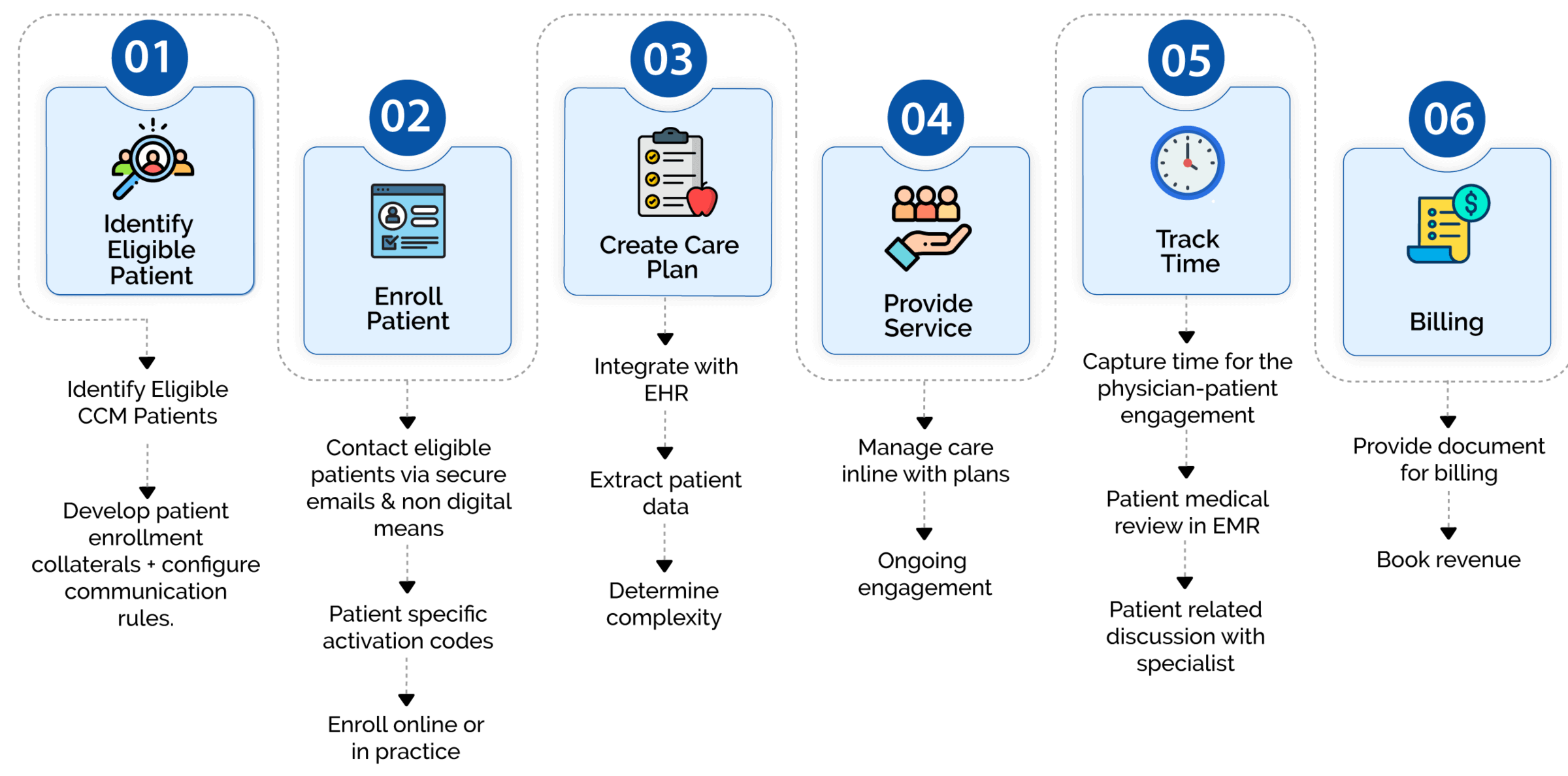Client Requirements
The client was a US-based healthcare technology company. They focused on transforming healthcare product delivery from a reactive, episodic approach to proactive care management. Every patient with chronic disease deserves consistent check-ins, follow-ups, and support.
The client wanted to develop a custom chronic care management application. This application would enable healthcare organizations and clinicians to provide chronic disease management services to their patients. It would also comply with all CMS rules and regulations.
The goal of developing this platform was to increase healthcare providers' revenue. This would enable patients to receive better care at a lower cost.
The client had a significant requirement to include critical features in their CCM application. These features included patient onboarding, Electronic medical records, care management, patient engagement, and automated billing with time tracking.
Thinkitive Solution
The business analysts and subject matter experts of Thinkitive initiated the requirement analysis (Discovery) phase. The group concentrated on obtaining requirements, researching, and recommending the best approach to the client's business. The business team spoke with clients on the phone multiple times. They created functional requirement documents and low-fidelity models and obtained client approvals on time.
Thinkitive assembled a team of experts in of healthcare domain as well as frontend and backend development talents.
The Thinkitive has employed a microservices-based architecture. Our team has created separate microservices for various modules, including patient, provider, and care management services. These services would interact with one another via well-defined APIs and handle a specific portion of CCM functionality. A microservice-based design can produce a more adaptable, scalable, and maintainable package management system.
See the diagram below for further information.

Solution Highlights
Our team developed a chronic care management platform according to the client's needs. This solution enables them to manage patients' health remotely. As a result, patient outcomes are improved, and healthcare costs are reduced.
-
Instant Enrollment with the Initial Interview
1. The provider can create a patient by manually entering demographics and insurance information. It can be fetched directly from integrated EHRs
2. The provider can create a health assessment during the initial visit. They can gather clinical information such as patient problems, symptoms, allergies, and current and past medication.
3. The system can evaluate clinical and insurance information and identify patients' eligibility for the CCM program.
4. Providers can enroll eligible patients into CCM programs. All they need to do is sign a consent form. Care plans should be assigned according to the patient's chronic conditions.
-
Configurable Patient-centric Care Plans
1. Providers can create multiple care plans. They can maintain a library for different specialties and groups of patients. This library consists of a set of assessments and questionnaires.
2. Providers can select suitable care plans for patients. They can then complete system-guided assessments. These assessments involve taking responses from patients for questionnaires added to the plan.
3. Care plan assessment includes the following elements: a provider must track patient progress.
- Conditions to target
- Symtopmes and barriers to be overcome
- Required support team (Clinical & family) and required interventions
- Patient allergies and medications to adhere
-
Secure HIPAA-compliant Patient Mobile App and Patient Engagement
1. Our mobile app development team has developed a HIPAA-compliant mobile application for IOS and android support.
2. Patients can use the mobile app to communicate with providers and support teams. They can do so securely, using HIPAA-compliant messaging, video, and audio calls. This can be done anytime.
3. Patients can access the care plan assessment to complete it. They can also access educational materials, expert sessions, and check-ins.
-
Review Patient Progress and Update the Care Plan
The provider can evaluate progress against goals. They do this by monitoring compliance and adherence to tasks in the patient care plan.
Based on the progress evaluated, the provider can make changes in the patient care plan and can be able to assign required tasks.
The provider can get alerts for any uncertainty surrounding patient health that can hinder their health progress.
The provider can communicate with the patient anytime when required.
-
Automated Time Tracking and Recurring Billing
1. An automated time tracker logs the provider's time on the patient's care plan. It also logs the time spent on progress reviews with non-face-to-face interventions.
2. The system uses the time logged and service provided to identify eligible billing patients. It then assigns the relevant CPT codes, following CMS guidelines.
3. The provider can bill each patient monthly per the service provided.
4. The provider can categorize patients into complex and Non- Complex chronic conditions.
Value Delivered
-
Enables provider to quickly enrollment of patients.
-
Patient-centric care plan leverages to personalized care.
-
Increased healthcare providers' recurrent revenue.
-
HIPAA-compliant patient engagement ensures the privacy and security of patient EMR.
-
Compliance with CMS guidelines makes the solution more efficient and scalable.
